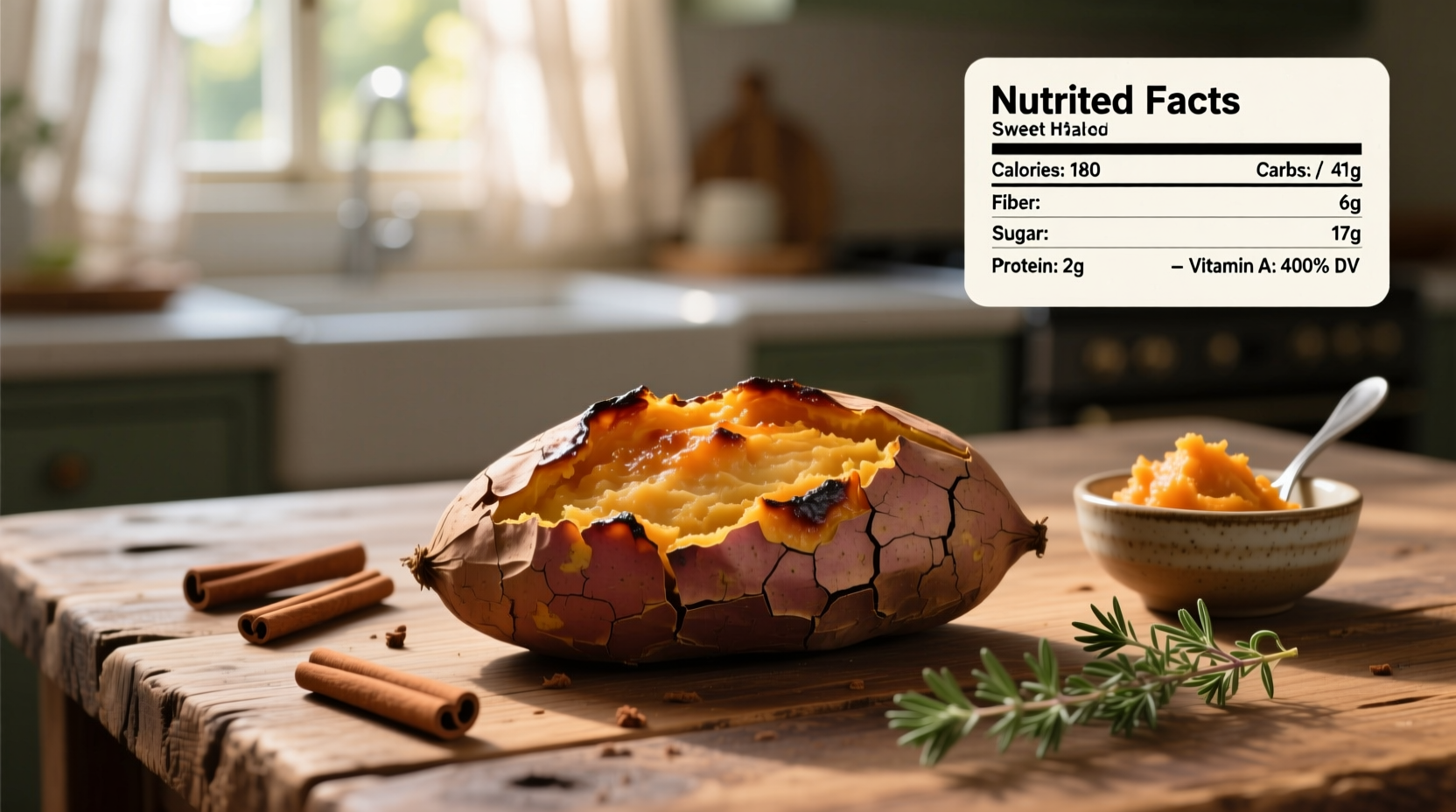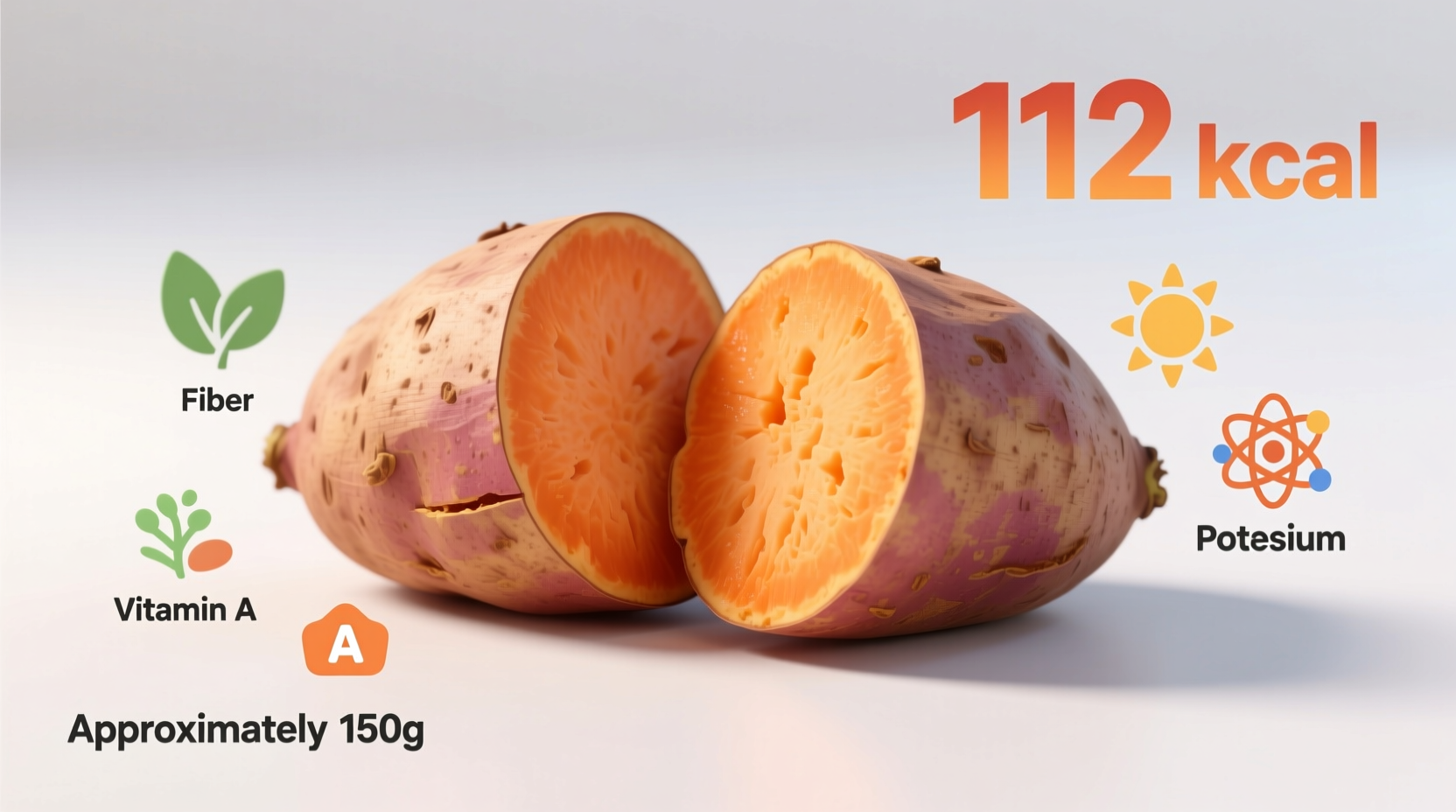Understanding the precise calorie content of sweet potatoes helps you make informed dietary choices without sacrificing flavor or nutrition. Whether you're managing weight, optimizing athletic performance, or simply eating healthier, knowing exactly what you're consuming matters.
Breaking Down Sweet Potato Calories by Serving Size
Calorie counts vary based on preparation method and portion size. The USDA FoodData Central provides these verified measurements for raw sweet potatoes:
| Serving Size | Calories | Carbohydrates | Fiber | Protein |
|---|---|---|---|---|
| 100g raw | 86 kcal | 20.1g | 3.0g | 1.6g |
| Medium (130g) | 103 kcal | 26.1g | 3.8g | 2.3g |
| Large (180g) | 155 kcal | 36.2g | 5.3g | 3.2g |
This nutritional profile makes sweet potatoes significantly more nutrient-dense than regular white potatoes while containing comparable calories. The key difference lies in the quality of carbohydrates and additional nutrients.
How Cooking Methods Impact Calorie Density
Your preparation technique dramatically affects the final calorie count and nutritional value. Research from the Journal of Food Science and Technology shows these changes:
- Boiled sweet potato: Retains nearly identical calorie content to raw (103 kcal for medium potato) while increasing vitamin A bioavailability by 50%
- Baked sweet potato: Concentrates natural sugars, raising calories slightly to 108 kcal for medium potato but boosting antioxidant levels
- Roasted with oil: Adds approximately 45-60 calories per teaspoon of oil used, significantly increasing healthy fat content
- Air-fried sweet potato: Maintains similar calorie count to baked but creates a crispier texture with less moisture loss
Unlike processed foods where cooking often degrades nutritional value, sweet potatoes actually become more nutritious when properly prepared. The Harvard T.H. Chan School of Public Health notes that cooking breaks down cell walls, making beta-carotene more accessible to your body.

Why Sweet Potato Calories Differ From Empty Calories
Not all calories function the same in your body. The 103 calories in a medium sweet potato deliver substantial nutritional benefits that processed foods with similar calorie counts cannot match:
- Vitamin A powerhouse: One medium sweet potato provides 438% of your daily vitamin A needs, crucial for vision and immune function
- Complex carbohydrate structure: Slow-digesting carbs prevent blood sugar spikes compared to simple sugars
- High fiber content: The 3.8g of fiber promotes satiety, helping you feel full longer with fewer calories
- Natural antioxidant profile: Contains anthocyanins (in purple varieties) and beta-carotene that combat oxidative stress
According to the Centers for Disease Control and Prevention, incorporating nutrient-dense foods like sweet potatoes helps Americans meet vegetable intake recommendations while managing calorie consumption.
Practical Applications for Your Diet
Understanding sweet potato calories allows you to strategically incorporate them into various dietary approaches:
- Weight management: Replace higher-calorie starches with sweet potatoes to maintain volume while reducing overall calories
- Pre-workout fuel: Consume 1-2 hours before exercise for sustained energy release during endurance activities
- Blood sugar control: Pair with protein sources like Greek yogurt or chicken to further stabilize glucose response
- Meal prep efficiency: Roast multiple sweet potatoes at once for ready-to-eat components in salads, bowls, or as side dishes
Nutrition professionals at the Academy of Nutrition and Dietetics recommend including sweet potatoes as part of a balanced approach to carbohydrate consumption, particularly for active individuals who need sustained energy throughout the day.
Common Misconceptions About Sweet Potato Calories
Several myths persist about sweet potato nutrition that deserve clarification:
- "Sweet potatoes are too high in sugar for diabetics" - While they contain natural sugars, their low glycemic index (44-50) and high fiber content make them suitable for most diabetic meal plans when portion-controlled
- "All orange-fleshed varieties have identical nutrition" - Different cultivars vary significantly in beta-carotene content, with some providing up to 300% more vitamin A than others
- "The skin should always be removed" - The skin contains additional fiber and nutrients; keeping it on increases fiber content by 15-20% while adding minimal calories
Registered dietitians emphasize that sweet potatoes offer a superior nutrient-to-calorie ratio compared to many other carbohydrate sources, making them a valuable component of balanced eating patterns.
Putting Sweet Potato Calories in Context
When evaluating whether sweet potatoes fit your dietary goals, consider these practical comparisons:
- A medium sweet potato (103 calories) contains fewer calories than a standard bagel (280-350 calories) while providing more fiber and vitamins
- Compared to white rice (205 calories per cup), sweet potatoes offer more nutrients per calorie and promote greater satiety
- The caloric density of sweet potatoes (0.8 cal/g) is lower than processed snacks like crackers (4.8 cal/g) or cookies (4.5 cal/g)
For athletes and active individuals, sweet potatoes provide ideal carbohydrate timing—consuming them 1-2 hours before exercise optimizes glycogen stores without causing digestive discomfort. The American Council on Exercise recommends sweet potatoes as part of post-workout recovery meals due to their balanced carbohydrate-to-nutrient ratio.











 浙公网安备
33010002000092号
浙公网安备
33010002000092号 浙B2-20120091-4
浙B2-20120091-4